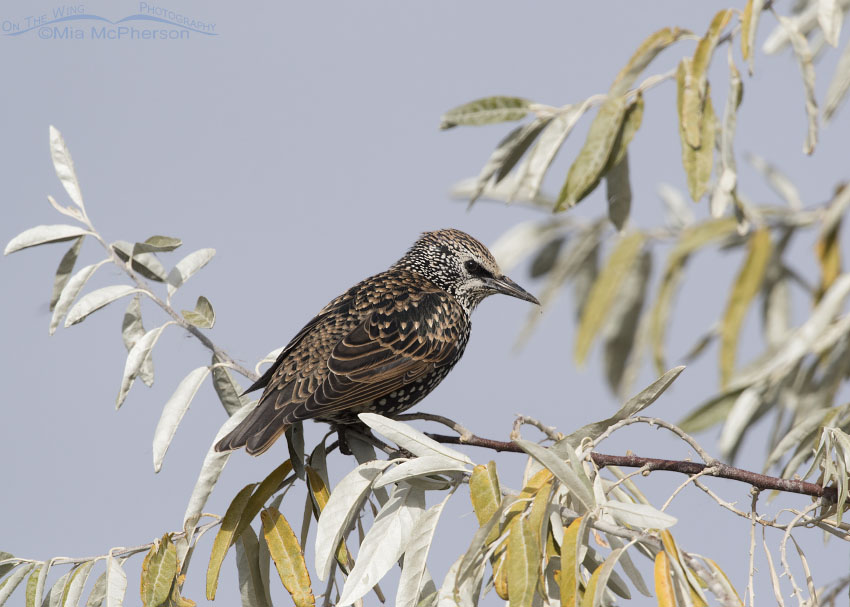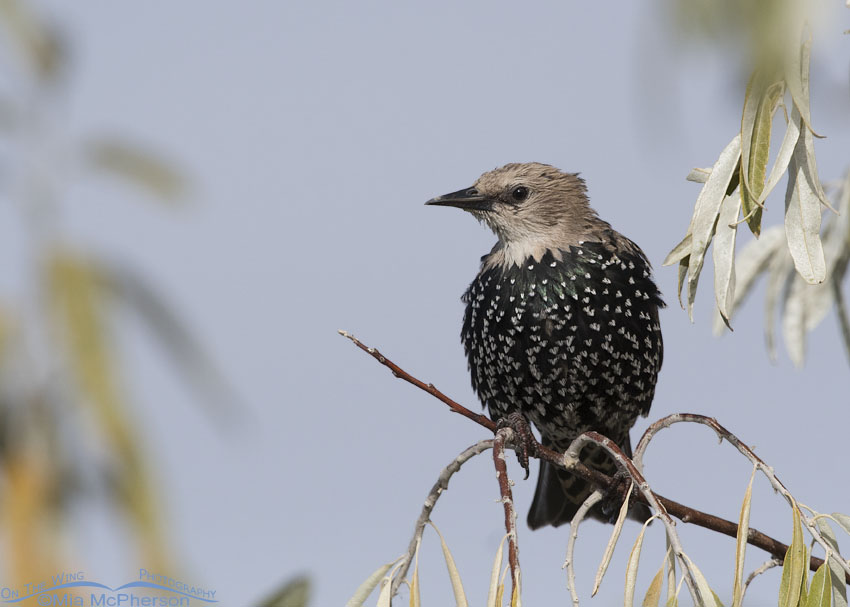I have an alternate title for this post which is “Invasive European Starlings perched on invasive Russian Olives” because both the birds in this post and the trees are not native but introduced. The starlings are hated, the trees not so much. Maybe that is because the olive trees don’t take over the nests of native birds or kill native birds but they are a problem nonetheless.
 Adult European Starling in nonbreeding plumage – Nikon D500, f7.1, 1/3200, ISO 640, +0.3 EV, Nikkor 500mm VR with 1.4x TC, natural light
Adult European Starling in nonbreeding plumage – Nikon D500, f7.1, 1/3200, ISO 640, +0.3 EV, Nikkor 500mm VR with 1.4x TC, natural light
Me, I don’t hate or blame the European Starlings for being here but I do think the humans that introduced them to North America could be considered foolish in hindsight. European Starlings are now among the most numerous songbirds in North America.
Shoving all of that aside, they can be rather pretty birds to look at. The adult above is in nonbreeding plumage and it shows the intricate patterns of its plumage on its head, back and wings and just a hint of the pattern on its breast.
 Molting juvenile European Starling – Nikon D500, f7.1, 1/3200, ISO 640, +0.3 EV, Nikkor 500mm VR with 1.4x TC, natural light
Molting juvenile European Starling – Nikon D500, f7.1, 1/3200, ISO 640, +0.3 EV, Nikkor 500mm VR with 1.4x TC, natural light
The photo above shows a molting juvenile European Starling in transition to adult plumage, many of its feathers have been replaced but it still has the head feathers of a juvenile. Kind of a punked out look.
It might be hard to see at this resolution but these European Starlings have tiny little white heart shapes all over their breasts at this time of the year which are actually tips of feathers and by breeding season they will have worn away.
Life is good.
Mia
Click here to see more of my European Starling photos plus facts and information about this species.


Yes, they are pests but I love their non-breeding plumage regardless.
We are remarkably careless about what we introduce. And then penalise those which adapt successfully.
Sigh.
The starlings arrive early, with a variety of black birds. They take over our feeders, chasing away the winter birds, knocking seed from our feeders and swarming the trees with their raucous screeches. I’m always glad to see them leave in the fall.